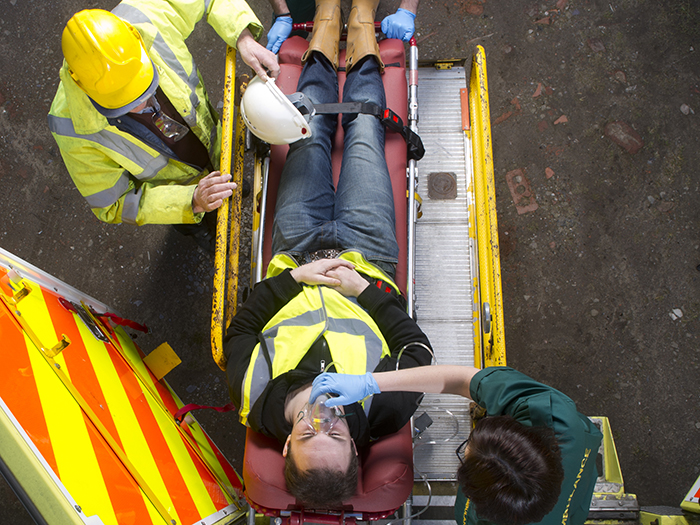Serious Work Injuries and Fatalities Spike as Labor Shortages Exacerbate the Problem

While companies have made steady progress in reducing minor injuries and lost workdays, they are seeing less success in cutting down on serious injuries and fatalities, according to a new report.
Fewer workers died or suffered severe injuries in the workplace in 2020.
However, the rate of serious injuries and fatalities rose from 366 per 100,000 workers in 2019 to 429 per 100,000 workers in 2020, according to risk management software firm ISN.
The rate was 406 per 100,000 in 2018.
The problem could worsen as companies around the U.S. contend with a shortage of labor, which can translate into longer hours on the job by less-experienced workers, as well as a greater reliance on outside contractors.
The data is not yet in for 2021, let alone 2022, said Duane Duhamel, corporate director for health, safety and environment at Dallas-based ISN.
But, he said, “my spider sense tells me these things are precursors to exposure to SIFs,” that is, serious injuries and fatalities.
Which Events Lead to Serious Injury?
ISN, which helps companies manage outsourced risk and strengthen relationships with vendors, crunched data on tens of thousands of reportable workplace incidents to suss out the trends.
The company published the results for 2018 to 2020 in a white paper earlier this year.
The white paper, “New Insights on Serious Injuries and Fatalities,” compiles information on more than 60,000 incidents reported to ISN and extracted from logs kept by the Occupational Safety and Health Administration. ISN relied on machine learning to determine which events were likely to have resulted in serious injuries and fatalities.
The results show where and when serious injuries and fatalities were most likely to occur, as well as what safety measures seemed to lessen the risk.
One takeaway is that companies need to continue their efforts to prevent minor injuries, and they should also consider additional measures that are more effective in preventing SIFs, Duhamel said.
“Focusing purely on what contributes to cut fingers doesn’t prevent the potential of a very serious fatality in a confined area,” said Duhamel, who joined ISN last year after 20 years in health, safety and environmental positions, including senior roles at Fortune 500 companies.
Between 2018 and 2020, the top cause of a serious injury or fatality was contact with an object or equipment, according to the ISN report.
Falls, slips or trips were the second most common, with overexertion and bodily reaction coming in third.
The most common injuries that caused SIFs were sprains, strains and tears, followed by fractures and dislocations.
The third-most common were cuts, lacerations, wounds and bruises.
Industries Prone to Injury, Industries on the Safe Side
Construction contractors were most likely to experience an incident, recording 42% of the total SIFs for 2020, according to ISN. Administrative support, waste management and remediation came in second at 29%. Transportation was third at 9%.
Safer industries include real estate rental/leasing and retail trade, both of which accounted for 0.5% of serious injuries and fatalities in 2020.
Two sectors also clocked in at 1%: utilities and agriculture, forestry, fishing and hunting.
Timewise, incidents spiked in July and August, potentially reflecting the impact of longer days, according to ISN. Crews may be working more hours and with fewer people due to summer vacations.
Other Considerations
Other factors also play into whether a company’s workers are more likely to suffer a serious injury or fatality.
According to ISN, leading indicators of higher SIF rates include operating commercial motor vehicles, receiving citations within the last three years, bringing chemicals on site and working at heights of six feet or more.
Employer actions also may contribute.
Employees see a higher risk for SIFs when they feel companies are not committed to safety-improvement actions or they feel that production requirements prevent them from following all safety requirements, according to the ISN report. Employees also keep an eye on whether companies have enough people available to complete jobs safely.
Another set of indicators show a decrease in risk.
They include submitting programs for a safe return to work, working in a process safety management facility, submitting a program for electrical safety and having an environmental program.
“There are definitely correlations between good safety practices operating within a management system and a reduction in SIFs,” Duhamel said.
Duhamel identified another strategy, as well: Encouraging employees to report and discuss near misses, that is, events that under different circumstances could have led to a serious injury or fatality but did not.
“You want those reported. You want those investigated. You want some corrective actions to follow,” he said.
Addressing Injuries in the Future
Companies have made progress in discussing near misses, treating them as learning opportunities and eliminating the fear of repercussions for reporting less-serious incidents, Duhamel said.
But, he added, “I do feel there’s more work to do in this space.”
Workers also need to be able to report the incidents quickly and easily, he added. And managers must act on the information rather than sit on it.
“Organizations that endorse those two aspects are more likely to have their employees more engaged,” he said.
ISN plans to use the white-paper data to engage with its roughly 700 clients and their outside contractors, Duhamel said.
“It’s understanding what that data is telling you and then looking at what specific action they can use to further reduce exposure and risk.”
The effort comes amid a likely increase in risks stemming from the nature of today’s workforce, where people are more likely to be switching jobs or retiring altogether. The results include frequent turnover and longer hours for those who remain in the workforce.
“All those variables, in my view, would have some form of impact on recordable injuries, days away from work and potential SIFs,” Duhamel said, noting hard evidence has yet to come in.
“Perhaps in the next version of our white paper,” which would cover 2019 to 2021, Duhamel said. &











